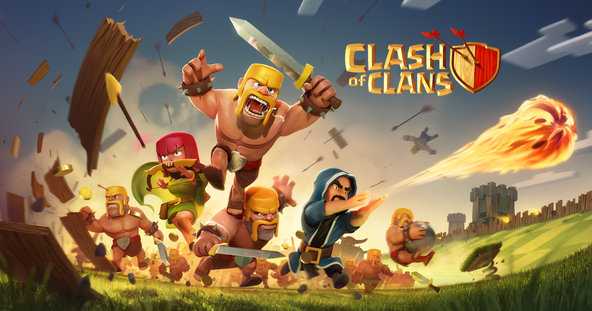I’m a believer in William Gibson’s dictum that “the future is already here—it’s just not evenly distributed.” When I’m part of a team designing something new, we always search for inspiration from existing products that are running a few meters out in front of the pack. More often than not, the most future-forward ones are video games.
An edgy brew of technology, design, and business, video games are a wellspring of innovation. Moore’s law dictates that the processors they run on are always getting faster, and games in turn push computing technology to the max, so performance constantly rises. Games have to be reliable and desirable, a fiendish design challenge. Their complex algorithms must not only work perfectly, but also make us marvel in the beauty of their output. And we’re willing to pay for it: this year’s global video game spending is expected to surpass $100 billion. The competition for that big pie feeds a lot of radical business model innovation.
So if innovating is your business, why not shell out a few quarters on video game research? Not only is it a lot of fun, but you’ll learn a ton. Here are four ways video games can help you become a better innovator:
Experience World-Class Experiences
Good experiences bring you joy and make you happy, great ones get you to flow—that sense where time slows down and you’re in the groove. World of Warcraft (WoW) is a masterful flow-inducing game, with the best digital interaction design in existence. Period. With WoW, in the first ten minutes you’re given a challenge that’s just a little more difficult than you can handle, so you immediately experience learning and growth. Before you know it, you’re on the road to personal mastery. That feeling continues at ten hours, ten days, ten months, and beyond. For pointers on how to make flow happen with your own product or service, WoW is a master class. To see an analogous experience on a mobile device, check out Monument Valley.
Grok New Business Models
The rise of free app ecosystems, Facebook, and networked gaming environments has forced video game makers to focus on business model innovation. For example, WoW generates $1 billion in yearly revenue via a mix of upfront payments and monthly subscription fees. Others have created new ways to claim value by seamlessly interweaving payment with game play and narrative. Clash of Clans is among the very best at this, helping its developer Supercell rake in $892 million in revenue in 2013. Want that Level 5 P.E.K.K.A.? With just a couple of screen taps, iTunes processes your $19.99, and she’s ready to go bash down some Inferno Towers.
Become a Better Creative Leader
Creative leadership is about managing uncertainty, surfing serendipity, and navigating the future with a compass, not a map—all skills that video games often require. Great creative leaders are able to:
- communicate effectively with teams of diverse individuals
- make quick decisions in dynamic situations with a high degree of uncertainty
- digest regular feedback to grow their leadership acumen, lest they lose their following
Leading people in a multiplayer video game is an amazing way to develop your creative leadership skills. Even if in “real life” you’re not in a leadership position, in an online game you can lead big teams of people for weeks at a time in order to hit challenging goals. Along the way, you’ll amass many more hours of real leadership mileage than you could by attending a training program or reading books.
Joi Ito, my erstwhile WoW guild leader (who also happens to be the head of the MIT Media Lab) believes that the “…leadership method of…World of Warcraft and open-source projects is actually really similar to doing something like leading a bunch of super-smart, creative academics and students.” Former Xerox Chief Scientist John Seely-Brown recently said, “I would rather hire a high-level World of Warcraft player than an MBA from Harvard.” * I share their sentiments: WoW is one of the best leadership academies out there.
Raise Your Own Innovation Game
Behind every great game is an equally fascinating creative backstory. How did they make it sing? How do they work as a team? How might elements of their approach work for you?
Killer Queen is a five-on-five video game that’s at once retro and progressive. Josh DeBonis and Nik Mikros—the creative duo behind it—nailed the game dynamics by having real people run around fields with foam swords—an epic, quick way to create a minimum viable product. An evidence-driven process—one built around employees actually using the stuff they create—is a great way to promote (or kill) new game ideas. The video game industry is as technologically sophisticated as they come, and more competitive than Formula 1, so rest assured that learning what makes it tick will make you a better innovator, too.
Although the stickiest learning is in the playing, I’m not suggesting that you need to develop a 24/7 World of Warcraft habit to master the four lessons above. You can learn a lot just by watching over the shoulder of someone else playing. Or ask your kids why they’re a master of a particular game, and what’s so cool about it. You will find myriad things to inspire better solutions to the challenges of your own work.
We’ve only scratched the surface of the thousands of superlative video games out there. As an innovator, which ones do you learn from? And what are the other big lessons to be had?
* to which I must ask, “Why not have both?”

